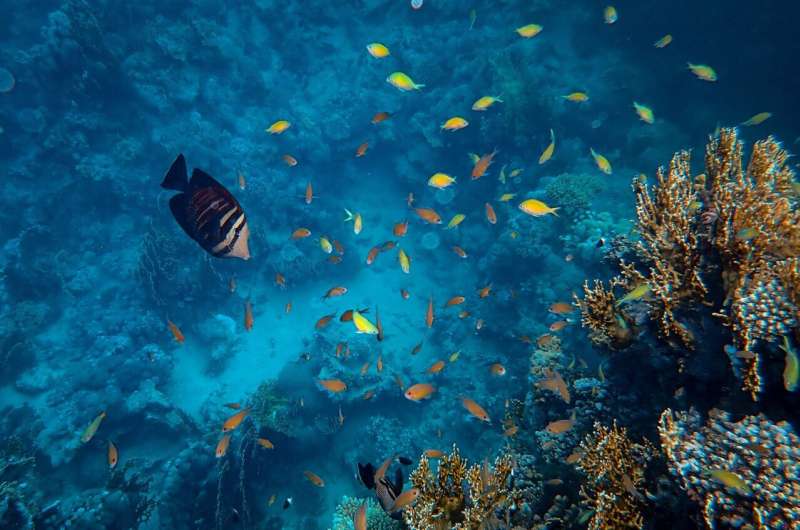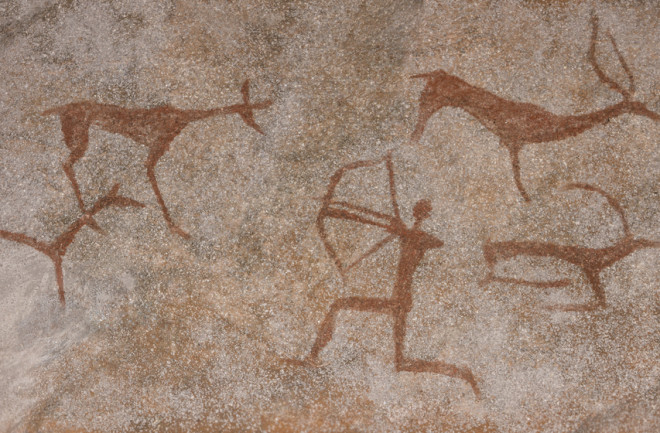
Frustration among scientists as many islands, hard hit by Covid and hurricanes, struggle to fight stony coral tissue loss disease
CJ Clouse
THE GUARDIAN
Krista Sherman understands ocean conservation work takes a good deal of patience. But the Bahamian-born marine scientist had never encountered a foe like stony coral tissue loss disease (SCTLD), and after efforts to monitor and treat the highly contagious outbreak in the Bahamas’ corals stalled, her patience was running thin.
“The disease is spreading really quickly. In some areas where we’ve been able to assess the rate of spread, we’re looking at a mile a month,” says Sherman, a researcher with the Bahamas-based Perry Institute for Marine Science.
“There’s a shift taking place at some sites, from healthy, vibrant reefs to what looks like a coral graveyard. And it’s really devastating to see; it’s just heartbreaking.”
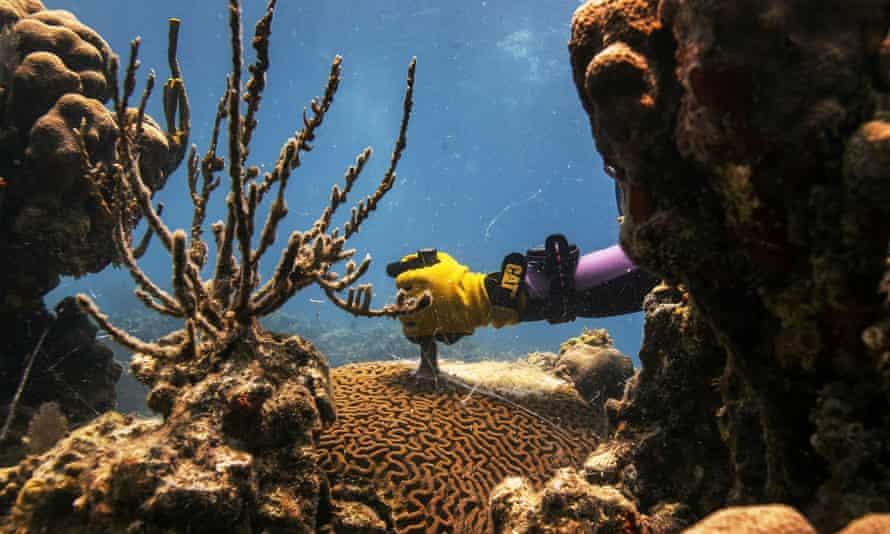
First discovered in Florida in 2014, the disease, which scientists believe is carried by ocean currents and commercial ships, has now been confirmed in 22 countries and territories across the Caribbean, according to data compiled by the Atlantic and Gulf Rapid Reef Assessment (AGRRA), a conservation organisation that has been tracking the outbreak.
SCTLD afflicts more than 20 coral species – including some of the largest and most important reef-building corals, which can take centuries to grow – eating away at their soft tissue until nothing but a skeleton remains. Infected colonies can be wiped out in months. Algae moves in, leaving large swaths of a once-colourful reef covered in dull grey-green or red-brown fuzz.
Scientists have yet to pinpoint the pathogen that causes the disease. So far, the only effective treatment involves applying antibiotic paste on to individual corals, a labour-intensive and expensive method. Once SCTLD infects a colony, any delay in response means more dead coral. Yet those involved in treatment efforts across the Caribbean say obstacles to their work are common – from pandemic lockdowns to lack of funding and government bureaucracy.
In the Bahamas, where SCTLD was first confirmed in December 2019, efforts to slow the spread were held up while researchers waited for the government to issue the permit required for them to study and treat the illness.
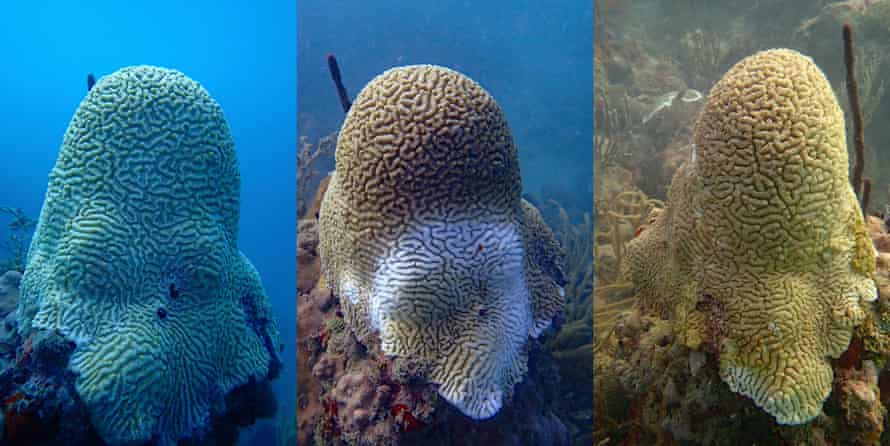
Local conservationists grew so frustrated that they began sounding the alarm publicly. The pressure seemed to work. On 18 March, the Bahamas’ Department of Environmental Planning and Protection permitted work to go ahead until June, when researchers will have to re-apply.
Across the Caribbean, “pretty much everybody is lagging behind because of how quickly this disease progresses”, says Miguel Figuerola Hernández, a coral reef specialist with the Puerto Rico Department of Natural and Environmental Resources (DNER). “You really need to have an emergency fund just waiting for these kinds of disasters.”
SCTLD was also confirmed in Puerto Rico in December 2019, and in the two years since then, efforts to treat the disease have not matched the scale of the problem, largely because of funding constraints. There are now outbreaks of the disease all around the main island as well as on reefs near the smaller islands of Vieques and Culebra.
Despite the threat to the island’s environment and economy, it was not until August 2021 that the governor of Puerto Rico, Pedro Pierluisi, declared an ecological state of emergency over the coral disease, allocating $1m (£750,000) in emergency funding to the DNER to tackle the crisis. The agency submitted a strategic response plan in December, which was approved in March.
I hate the idea [of using antibiotics]. But you know what I hate more? Watching everything dieSimon Walsh, dive-shop owner in Dominica
The funding would allow the DNER to to conduct crucial research and to support 11 small groups of volunteers with the resources they needed, Figuerola Hernández says, including a long-term study of corals’ response to the antibiotic treatment. So far, Figuerola Hernández and his colleagues have seen up to 70% effectiveness.
Meanwhile, the DNER has teamed up with local conservation organisations, and corporate donations have helped provide antibiotics, scuba gear and other supplies to volunteers. Nevertheless, there has not been enough money for key necessities, such as fuel for boats, says Nilda Jiménez-Marrero, the agency’s endangered species programme coordinator.
“We will lose a lot,” she says. “This is a very aggressive condition.
“The reefs will not be the same. But we will save what we can and hope they can come back from that.”
Scale is a big challenge across the region. Puerto Rico alone has nearly 5,000 sq km (2,000 sq miles) of coral reefs. Treatment involves identifying priority sites with the greatest abundance of large, old corals, then treating thousands of individuals. The quantity of amoxicillin antibiotic ointment necessary to treat 30 to 90 corals costs nearly $1,000.
In some cases, government action may also be delayed because officials resist publicly acknowledging the disease for fear that it will affect tourism, says Judith Lang, a marine biologist who heads AGRRA.
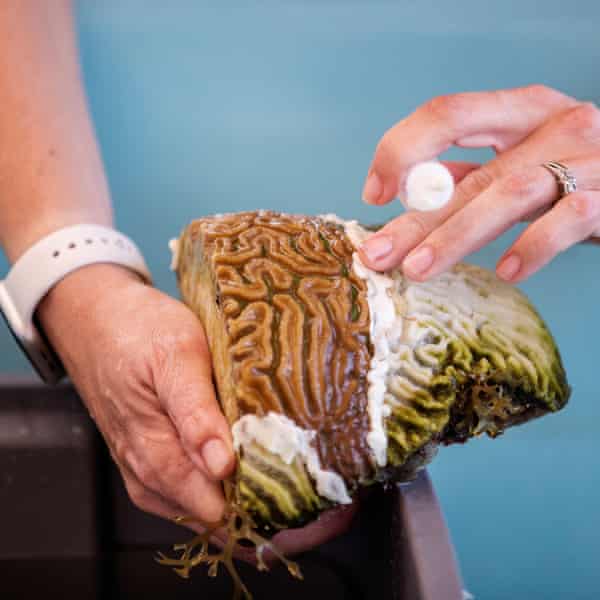
“They’re already suffering the consequences of the Covid pandemic, and the thought of tourists staying away because of this is really scary,” she says.
Travel and tourism contribute more than 15% of the Caribbean’s GDP and nearly 14% of its jobs. For some, Covid shutdowns came on the heels of extreme weather events.
“First it was [Hurricane] Maria, then Covid, and now this,” says Simon Walsh, a dive-shop owner in Dominica who has been spearheading SCTLD treatment efforts there.
In March, Resilient Dominica (REZDM), a local programme created in response to Hurricane Maria, agreed to provide $90,000 to pay three marine park wardens to monitor and treat SCTLD for a year.
This was welcome news, says Walsh. Until now, he has been working with other volunteers to treat the coral, financed by revenue from the island’s Soufriere-Scott’s Head marine reserve, private donations and their own money. Walsh does the work despite not being a fan of antibiotics in the water. “I hate the idea,” he says. “But you know what I hate more? Watching everything die.”
Some countries, such as the Dominican Republic, prohibit antibiotics in the open ocean due to concerns about long-term effects such as antibiotic resistance, and some scientists share this apprehension.
“We may be controlling the advance of the disease, but we may be killing some of the essential bacteria that corals and other organisms need,” says Ernesto Weil, a professor of marine science at the University of Puerto Rico.
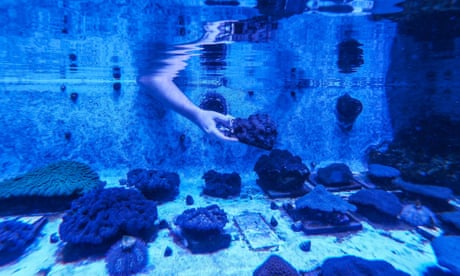
Scientists recreate reefs in labs to stem the plague killing coral – in pictures
Because SCTLD is so aggressive, he believes treating infected coral may not be the best use of resources, especially as researchers still do not know the exact cause. “We should concentrate our resources and energy after the disease goes through the reefs and then work with the survivors, because those survivors are resistant colonies,” he says.
Back in the Bahamas, researchers and volunteers have begun treating coral, starting in the waters around New Providence island. The Perry Institute and its partners also aim to establish a coral “gene bank” to preserve Bahamian corals in the Atlantis resort aquarium. Though smaller in scale, it will be similar to coral rescue efforts in Florida, where scientists have collected vulnerable corals and sent them to aquariums around the country in the hope of one day repopulating Florida’s reefs.
“There are so many people tackling these issues, so that gives me hope,” Sherman says. “I don’t know exactly what coral reefs will look like in the future, but their continued existence really depends on us.”
